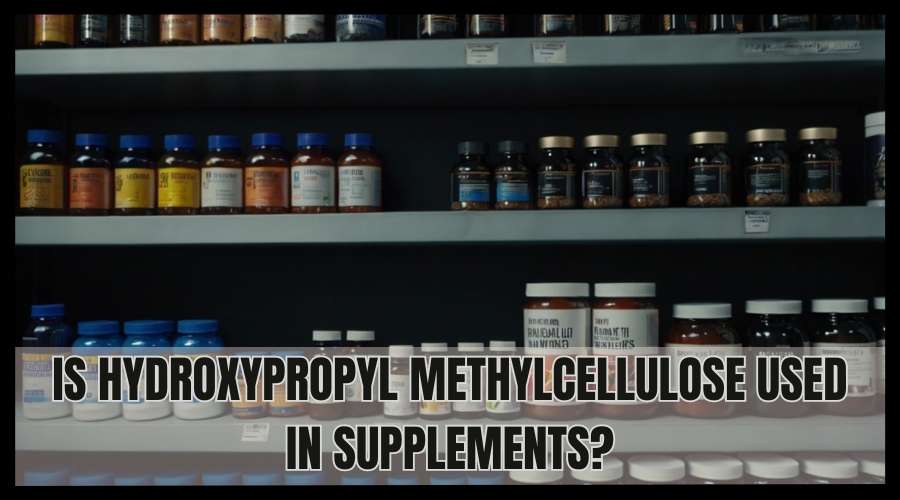
In recent years, the demand for dietary supplements has grown significantly as people become more health-conscious and seek ways to improve their well-being. With this surge in interest, the ingredients used in these supplements have come under closer scrutiny. One such ingredient often appearing on labels is Hydroxypropyl Methylcellulose (HPMC). But what exactly is HPMC, and why is it used in supplements? In this article, we will delve into the role of HPMC in the supplement industry, its benefits, and any potential concerns surrounding its use.
Hydroxypropyl Methylcellulose, or HPMC or Hypromellose, is a semi-synthetic polymer derived from cellulose, the natural fiber found in plants. HPMC is commonly used as a thickening, suspending, or emulsifying agent in various industries, including pharmaceuticals, food, and cosmetics. Its versatility and safety profile make it a popular choice in producing many consumer products.
The production of Hydroxypropyl Methylcellulose involves modifying cellulose by introducing methyl and hydroxypropyl groups. This chemical modification enhances the solubility of the cellulose and alters its physical properties, allowing it to form gels or films when mixed with water. The resulting compound is a white, odorless, and tasteless powder that dissolves easily in cold water.
HPMC is primarily used in supplements as a capsule or tablet binder. Here's why it's preferred:
One of the main reasons HPMC is popular in supplements is because it provides a plant-based alternative to gelatin derived from animal collagen. This makes HPMC an ideal choice for vegetarian and vegan supplements, catering to a growing market of consumers who avoid animal products.
HPMC is known for its stability and resistance to humidity, which help protect the active ingredients in supplements from degradation. This stability ensures that supplements maintain efficacy over time, leading to a longer shelf life.
In tablet form, HPMC can be used to control the release of active ingredients. It acts as a matrix that gradually dissolves, releasing the supplement's ingredients sustainably. This controlled release can enhance the supplement's absorption and effectiveness.
HPMC contributes to the uniformity and quality of supplement formulations. As a binder, it helps hold the ingredients together, ensuring that each tablet or capsule contains a consistent amount of active ingredients.
Hydroxypropyl Methylcellulose is utilized in various forms within the supplement industry:
HPMC is widely used to produce capsule shells, particularly in vegetarian and vegan supplements. These capsules are transparent, easily digestible, and offer a neutral taste, making them a preferred choice for consumers.
In tablet manufacturing, HPMC serves as a binder and disintegrant. It helps tablets maintain their shape while ensuring they dissolve appropriately in the digestive system, allowing for the efficient release of nutrients.
HPMC is also used as a coating agent for tablets and capsules. This coating protects the contents from moisture, masks any unpleasant taste, and can provide enteric protection, ensuring the supplement is released in the intestine rather than the stomach.
As a widely used excipient, HPMC is considered safe for consumption by regulatory agencies such as the FDA and EFSA. It is non-toxic, non-allergenic, and generally well-tolerated by most individuals.
HPMC is not digested or absorbed by the human body; it passes through the digestive system unchanged. This characteristic makes it an excellent choice for supplements, as it does not interfere with the absorption of active ingredients.
HPMC is hypoallergenic, meaning it is unlikely to cause allergic reactions. This makes it suitable for supplements intended for individuals with sensitive digestive systems or those prone to allergies.
While HPMC is generally regarded as safe, there are a few considerations to keep in mind:
Some consumers may be concerned about the overuse of excipients like HPMC in supplements. Although these substances are necessary for the production and stability of supplements, excessive use of excipients may be perceived negatively.
As a semi-synthetic polymer, HPMC production involves chemical processing. While it is derived from natural cellulose, the environmental impact of its production is a consideration for eco-conscious consumers and manufacturers.
For those who prefer to avoid HPMC, there are alternative materials available for capsules and tablet binding:
Pullulan is a natural polysaccharide produced by fermentation. It is often used as a plant-based alternative to gelatin and HPMC in capsule production. Pullulan capsules are known for their oxygen impermeability, which helps extend the shelf life of supplements.
Modified starches are another alternative used in tablet binding and coating. These are derived from natural starch sources like corn or potatoes and are modified to improve their functionality in supplement formulations.
The rise of gelatin-free supplements has significantly increased the demand for HPMC as a capsule material. HPMC capsules offer a viable solution for manufacturers looking to provide plant-based products without compromising quality or functionality.
As the supplement industry continues to evolve, the use of HPMC and similar excipients will likely grow. Innovations in material science may lead to the development of new forms of HPMC or alternative excipients that offer even better performance and sustainability.
In conclusion, Hydroxypropyl Methylcellulose is a valuable and versatile ingredient in the supplement industry. Its use as a capsule material, binder, and coating agent makes it indispensable for manufacturers, particularly in producing vegetarian and vegan supplements. HPMC is generally recognized as safe and effective, providing stability, controlled release, and consistency in supplement formulations. While there are considerations regarding its environmental impact and the overuse of excipients, HPMC remains a popular choice due to its many benefits. As consumer demand for plant-based and high-quality supplements continues to grow, HPMC will likely remain a staple in the industry.